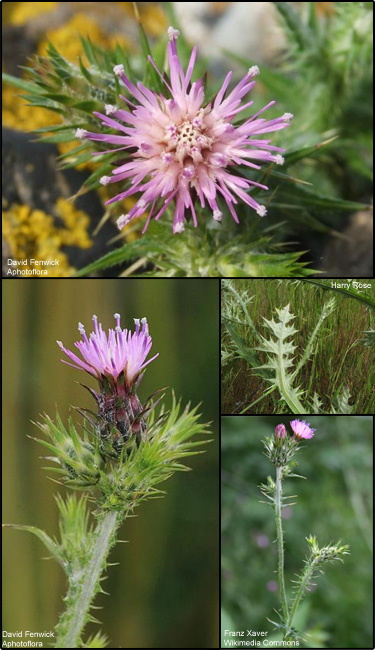Italian plumeless thistle (Carduus pycnocephalus)
 Common Names: Plymouth thistle, shore thistle, slender thistle
Common Names: Plymouth thistle, shore thistle, slender thistleDescription: Introduced to North America on ships' ballast.
Habit: Spiny annual or sometimes biennial growing to a height of 6-8 feet.
Leaves: Green and nearly hairless above, cobwebby hairs below. Pinnately lobed into spiny-lobed segments, terminal spine prominent.
Stems: Spiny, winged stems.
Flowers: Purple in color, narrow, borne in terminal clusters of 1-5. Bracts at the base of the flowerheads are stiff, upright with forward pointing hairs.
Fruit and seeds: Light brown to brown with veins, 4-6 mm. long with hair at one end.
Habitat: Native to southern and western Europe. Can be found in disturbed sites, pastures, rangeland, right-of-ways, and waste areas.
Reproduction: By seed.
Similar species: Slenderflower thistle (Carduus tenuiflorus)
Monitoring and rapid response: Grazing animals have shown to be effect in reducing density. Two fungi have been evaluated as agents on Italian thistle. Credits: The information provided in this factsheet was gathered from the Washington State Noxious Weed Control Board.
Individual species images that appear with a number in a black box are courtesy of the Bugwood.org network (http://www.invasive.org). Individual photo author credits may not be included due to the small display size of the images and subsequent difficulty of reading the provided text. All other images appear courtesy of Google (http://images.google.com).
Common Name: | Italian plumeless thistle |
Scientific Name: | Carduus pycnocephalus |
Family: | Asteraceae (Aster) |
Duration: | Annual |
Habit: | Herbs |
USDA Symbol: | CAPY2 |
